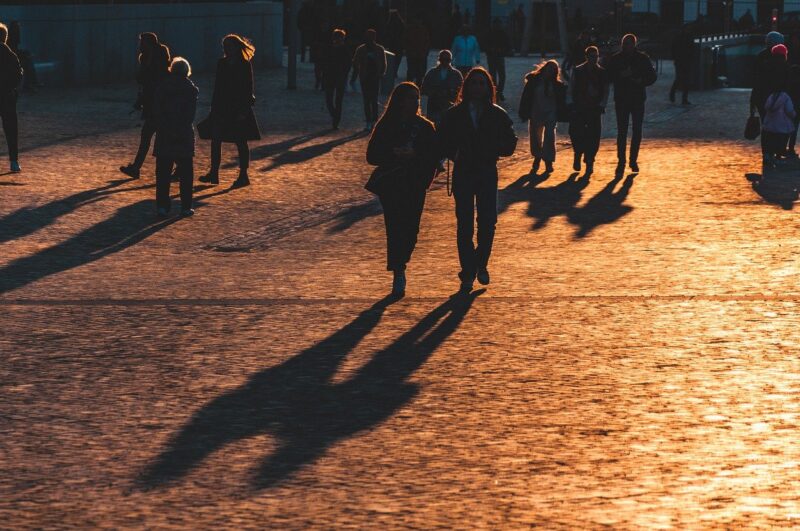The Science of Urban Green Spaces and How Plants Improve City Life
November 12, 2024

Urban areas are often characterized by concrete jungles, bustling streets, and a lack of natural greenery. However, in recent years, there has been a growing recognition of the importance of urban green spaces and their role in enhancing city life. These spaces can include parks, community gardens, green roofs, and street trees, all of which offer numerous benefits to urban residents. In this article, we will explore the science behind urban green spaces and how they positively impact our well-being, environment, and city life.
1. Understanding Urban Green Spaces
Urban green spaces are areas filled with vegetation that serve multiple functions within a city. They encompass both public and private spaces, ranging from large city parks to smaller neighborhood gardens or green infrastructure projects.
These spaces are essential for:
- Biodiversity: They provide habitats for various species, contributing to biodiversity in urban settings.
- Climate Regulation: Plants help regulate temperatures, mitigate urban heat islands, and improve air quality.
- Social Interaction: Green spaces act as community hubs, fostering social interactions and connections among residents.
- Recreational Opportunities: They offer places for leisure activities such as walking, jogging, picnicking, and playing sports.
As cities continue to grow, integrating more green spaces becomes increasingly vital, not just for aesthetic purposes but also for the health and well-being of urban dwellers.
2. Psychological Benefits of Green Spaces
The presence of greenery in urban areas has been linked to improved mental health and well-being. Numerous studies have shown that spending time in nature can reduce stress, anxiety, and depression. Here are a few key psychological benefits:
- Stress Reduction: Nature has a calming effect on the mind. Interacting with green spaces can lower cortisol levels, the body’s primary stress hormone.
- Enhanced Mood: Exposure to nature is associated with increased feelings of happiness and life satisfaction. Green environments can boost positivity and emotional resilience.
- Improved Focus and Cognition: Natural settings have been proven to enhance cognitive function, promote creativity, and improve attention span while reducing mental fatigue.
Studies by researchers such as Kaplan and Kaplan have emphasized the restorative effects of nature, highlighting that even short breaks in the presence of natural elements can lead to significant improvements in mental well-being.
3. Environmental Benefits of Urban Green Spaces
In addition to their positive effects on mental health, urban green spaces also play a significant role in environmental sustainability. Here are notable benefits:
- Air Quality Improvement: Plants absorb carbon dioxide and release oxygen, thus enhancing air quality. They also filter pollutants, trapping dust and particulate matter, making city air cleaner to breathe.
- Temperature Regulation: Urban areas often experience the urban heat island effect, where temperatures are significantly higher than in surrounding areas due to human activity. Green spaces help mitigate this effect by providing shade and releasing moisture into the air through evaporation.
- Stormwater Management: Plants and soil play a crucial role in absorbing rainfall, which reduces runoff and minimizes the risk of flooding. Green infrastructure such as rain gardens and permeable pavements can effectively manage stormwater in cities.
Incorporating more greenery into urban planning can lead to healthier ecosystems while promoting sustainability and combating climate change.
4. Social and Economic Benefits of Green Spaces
Urban green spaces also foster community cohesion and offer economic advantages:
- Promoting Social Interaction: Parks and community gardens provide a setting for people to gather, socialize, and participate in various activities. This helps build relationships within neighborhoods and enhances community spirit.
- Increased Property Values: Proximity to green spaces can raise property values, as homes located near parks or green environments are generally more desirable. This can lead to increased investment and neighborhood revitalization.
- Boosting Local Economy: Green spaces can attract tourists and local visitors, benefiting nearby businesses such as cafes, shops, and fitness centers, thereby stimulating local economies.
Bringing greenery into urban settings is not only beneficial for individuals but has far-reaching effects on communities and local economies as well.
5. Best Practices for Implementing Green Spaces
As cities strive to incorporate more greenery, several best practices can guide successful implementation:
- Community Engagement: Involve community members in the planning process to understand their needs and ideas for green spaces. This enhances the sense of ownership and responsibility for these areas.
- Diverse Plant Selection: Use a variety of native, climate-adaptive, and pollinator-friendly plants to support biodiversity and attract beneficial insects, such as bees and butterflies.
- Inclusive Design: Ensure that green spaces are accessible to all, regardless of age or ability. Incorporate features like wheelchair-accessible paths, seating, and sensory gardens to create inclusive environments.
- Sustainable Practices: Use sustainable landscaping practices, such as xeriscaping, rainwater harvesting, and organic gardening methods to maintain green spaces efficiently and environmentally responsibly.
Engaging in these practices can help cities create green spaces that are not only functional but also cherished by their communities.
6. Conclusion: The Future of Urban Green Spaces
As urbanization continues to rise, the need for green spaces becomes increasingly pressing. The benefits of urban greenery are multidimensional, affecting individuals’ health, community dynamics, environmental sustainability, and economic vitality. Cities worldwide are beginning to recognize this value and are taking steps to prioritize the inclusion of nature into urban life.
By investing in urban green spaces, we can nurture healthier, happier, and more sustainable cities for future generations. Moving forward, the challenge lies in integrating green spaces into urban design in a way that maximizes their benefits and ensures accessibility for all residents. With collective efforts, we can reawaken our cities and transform them into harmonious green environments that support life and well-being.
Engaging with and advocating for urban greenery can lead to positive changes in the physical and social fabric of cities. Let’s not forget that behind every green space lies the potential for a thriving urban community and environment.








